
Raised bed gardening is not a new concept. Traditional gardeners used to double dig their beds to form rectangular or circular mounds 1-1 ½ ft. high, with sloping edges.
A standard practice in areas receiving plenty of rain, it ensured good drainage, besides providing a bit of extra space for growing vegetables.
This type of gardening also proved to be perfect for many companion plantings such as carrots and onion family vegetables. The carrots went on the flat top of the beds and enjoyed the deep soil while the onions and leeks planted on the sides all around protected the beds from pests.
The benefits don’t end there, so it’s no surprise that modern gardeners are increasingly embracing raised bed gardening, albeit with a new twist.
The sloping sides of the earlier beds have been replaced by solid frames that give them a well-defined look. This way, the beds can be as high as you’d like them and prevents soil runoff during rain.
Modern raised beds are relatively easy to construct on your own, making them an excellent option for many. The frames are built with bricks, concrete blocks or timber, and filled up with good soil and plenty of organic matter.
With ready-to-assemble kits and prefabricated, food grade plastic containers available, anyone can now have a few raised beds to grow their veggies.
Let’s look at a few of the other benefits of raised bed gardening.
1. Good aeration
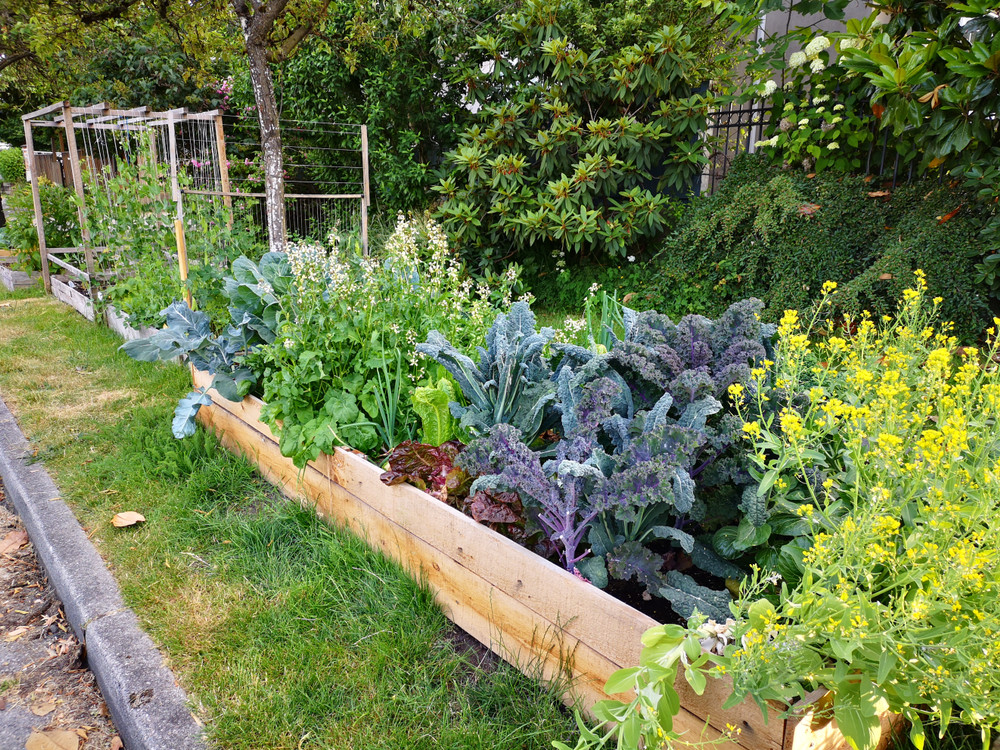
You can make your raised beds the traditional way by digging up the ground and supporting the sides with a solid frame. Or just pile up good quality soil, decomposed farmyard manure, and compost within the frames.
Either way, it provides the plants with a rich growing media with a loose structure and allows for good air circulation around the roots.
Like every other part of the plant, roots need to breathe. They breathe in the oxygen from the air and expel carbon dioxide. If the soil is too compacted, the roots suffocate and fail to develop properly. That’s because good aeration is necessary for the roots to absorb essential nutrients.
For example, the air pockets in the soil hold nitrogen which is converted into nitrate and nitrite salts by the soil bacteria, making this macronutrient available to the plant. Fewer air pockets mean less availability of nitrogen.
Proper aeration is important for keeping the microbial population in the soil healthy. It helps maintain a balance between the aerobic and anaerobic bacteria that play different roles in enhancing soil fertility.
2. Good drainage
Raised beds provide good drainage even in heavy rains. This is one reason it has always been popular in tropical areas that get heavy rainfall.
The loose texture of the soil allows the water to seep into the bed, preventing quick runoff that would otherwise carry away the fertile topsoil. At the same time, it allows excess water to drain away.
Most plants grow well in moist soil, but many of them hate wet feet. For one thing, too much water around the roots interferes with their breathing. Secondly, constant moisture promotes bacterial and fungal diseases.
Water logging can even change the pH of the soil, making it more acidic and less favorable to plants preferring neutral to slightly alkaline soils.
The ideal soil moisture for most plants is around 25%, although bog plants have adapted to living in soils saturated with water. When you water your plants growing in raised beds, the water gets absorbed into the lower layers of the beds rather quickly. It keeps the soil evenly moist but without allowing the water to stagnate.
3. Root spread
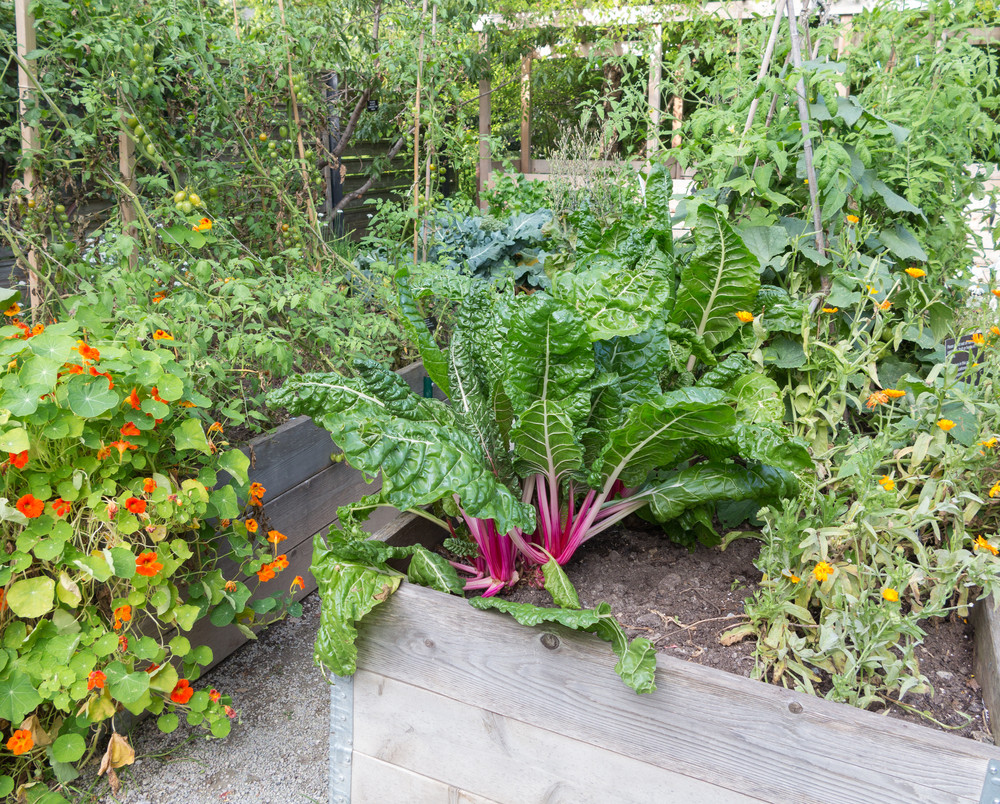
It is quite evident that plant roots would find it easier to grow and spread in every direction when the soil is loose. Not only that but the framed beds retain moisture much longer than traditional raised beds since water loss from the sides is minimized. This keeps the beds from drying out between watering and facilitates good root run.
Plants that are growing in the ground usually have a shallow root system unless the ground is tilled deep before planting. Such plants cannot access the moisture in the lower layers of soil, and are more likely to get dehydrated as soon as the surface moisture evaporates.
A well-developed root system anchors the plant and helps it gather water and nutrients from a larger area which is particularly important for vegetables. They have to grow vigorously and produce maximum yield within a short period.
4. Less risk of soil compaction
Raised bed planting may not prevent your cats and dogs from rolling in the mud and digging up the soil, but there is less chance of people and larger animals casually walking on the beds and tamping down the soil.
If the width of the beds is kept at 3-4 feet, you can conduct other gardening chores like fertilizing, weeding and harvesting without stepping on the bed.
Flooding during rains is another way the soil in cultivated fields gets compacted. The wet and heavy soil particles settle down, filling up the air spaces. As the water evaporates, it leaves behind a hard and dense layer of soil, making it less hospitable to plants.
With water quickly draining away from raised planting beds, there’s no danger of soil compaction due to flooding.
5. Better weed control
Raised beds encounter relatively few weed problems. Even if you double dig the ground and meticulously remove all the weeds, you might see weeds taking over the beds soon enough.
The deep cultivation exposes a lot of weed seeds lying dormant in the soil. Sun exposure and the additional water they get when you irrigate the field give them the long-awaited opportunity to sprout. They quickly take root in the fertile soil and thrive on the nutrients meant for your veggies.
In making the raised beds, you have the option of filling up the frames with compost and soil relatively free of weeds. The loose soil and good accessibility to the beds make it easier to pull up the few weeds that may come up. Also, the general practice is to place plants very close to each other. When they grow and fill in the bed, they do an excellent job of suffocating out weeds.
6. It is easier than trying to amend existing soil
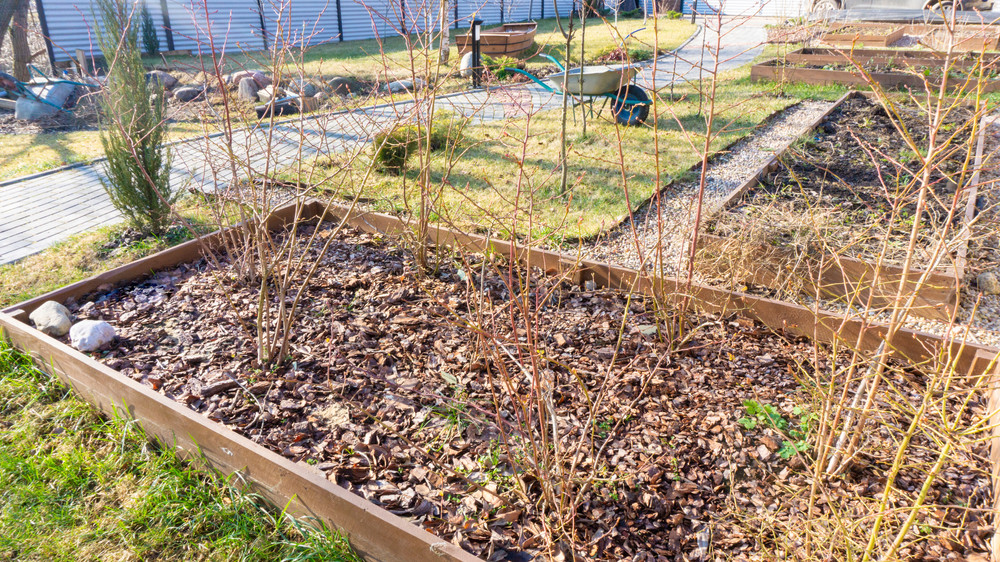
Soil everywhere is not the same. Some places may be too chalky and alkaline while you may find the ground in some gardens too acidic for most plants. Most vegetables prefer a neutral to slightly acidic soil that fall within the pH range of 5.5 to 7.5.
However, there are a few acid-loving plants, like blueberries, as there are others like broccoli and asparagus that prefer slightly sweeter soil.
Gardeners usually amend their alkaline soil by adding sulfur, and acidic soil by adding lime.
Repeated applications may be necessary to bring the pH to the desired level, but rain can change it overnight. There’s only so much you can do to amend the innate nature of your soil.
When you want to grow a variety of vegetables in raised beds, you can make the beds with any soil you desire. Moreover, you have the option of filling up different beds with various types of soil to suit the plants you intend to grow in them.
Since most gardeners use a lot of compost to fill in their raised beds, it is relatively easier to maintain the neutrality of the soil.
7. Build on existing turf
To start a new vegetable patch on the ground, you may have to dig up the turf and clear out the sod. But raised beds can be constructed right on top of the existing grass without digging it up.
To do this, just line the area with thick layers of newsprint and cardboard and fill the frames in with soil, grass clippings, cured farmyard manure, sand, and compost. Your seeds and seedlings can go right on top. You save a lot of backbreaking work and time when you garden in this fashion.
8. Relief from root run from trees
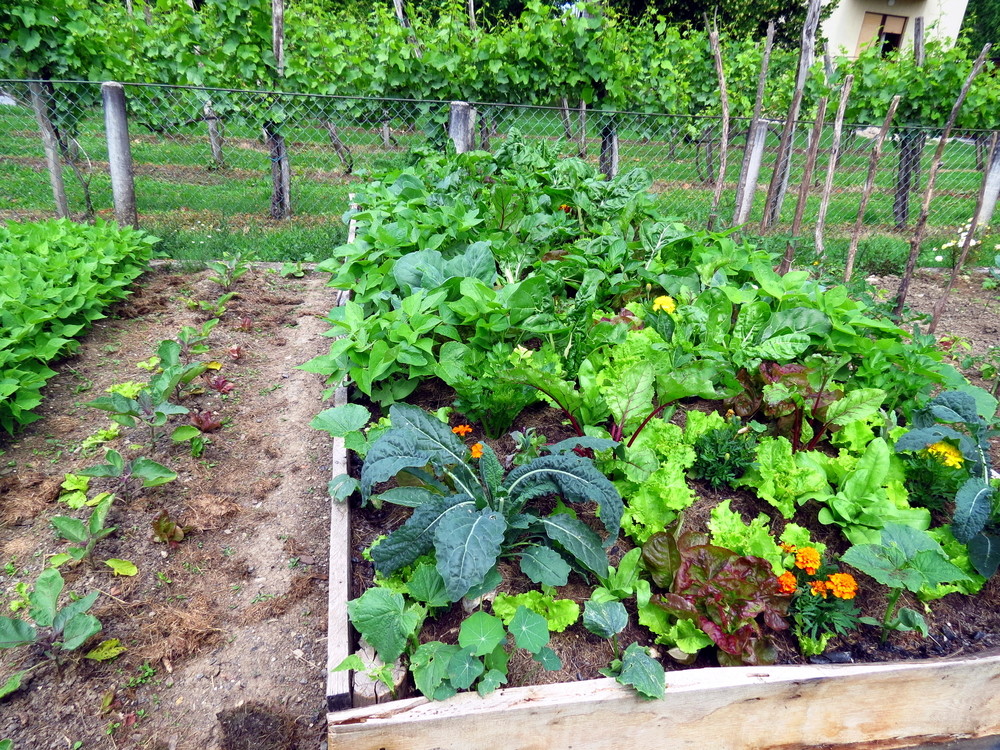
If you garden close to a wooded area, the nearby trees often extend their massive roots to your well-cultivated veggie patches and feast on the rich soil. No amount of digging can completely get rid of this menace.
You may need concentrated chemicals to kill these roots, but this can harm your vegetables, besides adding to the toxic load. Since roots are naturally inclined to grow downwards, your raised beds have little danger from them.
9. Better pest control
Many creepy crawlies find their way into veggie patches by crawling on the ground. At least a few of them may be deterred by the solid frames that surround the beds.
If nematodes and other soil parasites are a problem, you may have better protection against them by using a plastic liner at the bottom and sides of the bed. A wire netting at the base of the raised beds may disappoint the pesky rodents that hope to burrow their way into to your beds.
Whether it is to handpick the offenders or use natural pesticides on your plants, it is easier to do them in raised beds as you have more visual and physical accessibility. Since you can walk between the beds and inspect the plants often, you might spot infestations quite early. The earlier you tackle pest problems, the better.
10. Provides extra space
Traditional raised beds provided extra space on the sides for planting, but that advantage is lost with the framed beds of today. Nevertheless, many plants along the edges grow over the sides, freeing up space on top of the bed and letting in more light for the other plants there.
Instead of staking the indeterminate varieties of tomato, you can allow them to grow upside down from taller beds.
In addition, sweet potato vines and strawberries tumbling over the sides of the beds can give your garden a luxurious look.
11. Extend the growing season
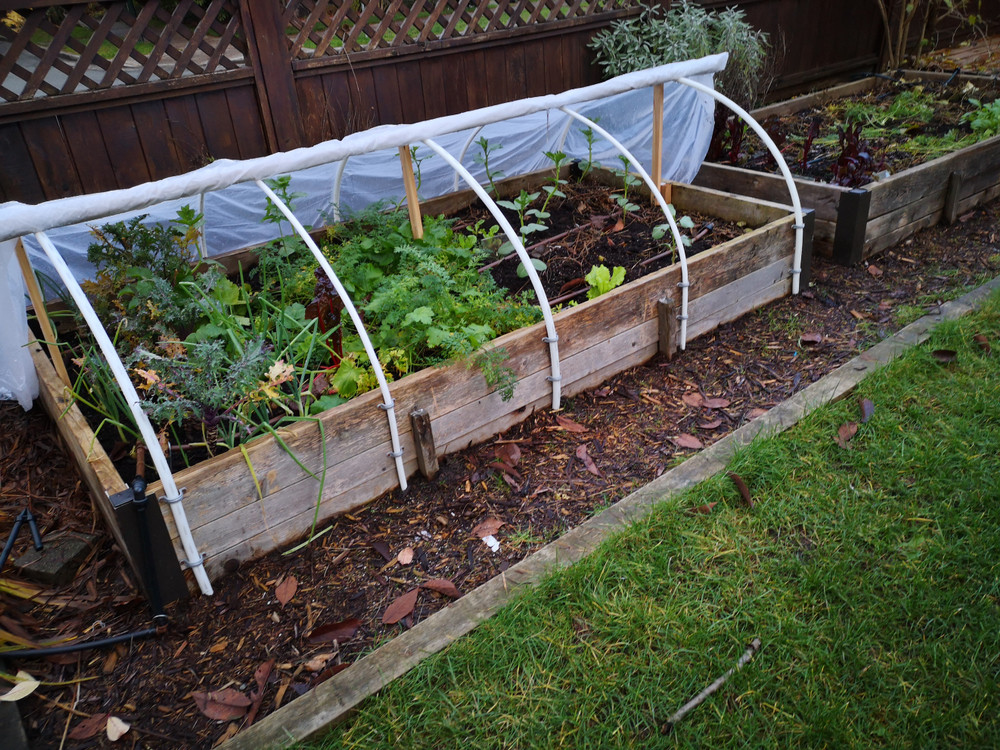
The raised beds will thaw much faster in spring than the frozen ground. So you can transplant your veggie seedlings earlier and give them a good head start. It can make a big difference to gardeners who have only a small window to grow edibles out in the open.
Vegetables like onions require a long growing season. Onion sets need 3-4 months while growing them from seeds takes even longer. Since fewer varieties of onions are available as sets, there is a definite advantage in growing these vegetables from seeds. The seedlings grow best in cool weather, so the earlier you plant them in the bed, the better.
You can extend the growing season of your veggies on the other end by adding hoop covers towards the fag end of fall.
Adding a few metal pipe brackets to the frames will enable you to attach and remove hoop covers easily. You can even get custom-made cloche for each of the beds.
12. Higher yield from intensive gardening
Raised bed gardening gives a better yield than plants grown on cultivated flat ground. Factors like good soil aeration and root run contribute to this, but an intensive culture is the main reason. In raised beds, a variety of vegetables are planted closer than you would in the ground.
The rich soil with higher content of compost and organic matter from other sources can support more plants. They are expected to completely fill in the bed as they grow, their leaves nearly touching one another. This also eliminates competition from weeds.
13. Ideal for mobility challenged gardeners
Raised beds can be constructed at any desired height and width so that people who have difficulty bending and stretching can have easy access to plant the bed as well as harvest the vegetables. You can space the beds to accommodate wheelchair movement all over the garden.
Not only the mobility-challenged, but any gardener would enjoy a respite from backbreaking work by having at least a few raised beds to grow veggies that need frequent attention. They are ideal for herbs and salad vegetables that you need to harvest often.
14. Portability
Raised beds offer portability within the garden without a lot of additional work. When you feel that some of your vegetables are not getting as much sun as they require, you can move the raised beds to a brighter spot.
If the bed has a wire bottom, you might be able to drag it to the new location. Or, you can dismantle the frame and reassemble it at the new spot. The contents, and even the plants, can be carefully moved too.
You can find ready-made raised beds on casters that make it easy to move them from place to place, even out of town. You can even push them into a heated garage in case of an early frost.
Several gardening concepts such as square foot gardening, keyhole gardening, hugelkultur and hay bale gardening are variations on the raised beds theme. They make growing food less challenging and more rewarding for the new age gardener.
